Social media is the place to be for any company, organization, or professional that wants to reach customers or their community. With 4.6 billion people now using social media, it’s definitely a marketing channel you shouldn’t ignore. Marketers rely on social media management software to automate many of the tasks involved in creating, publishing, and managing content across social media accounts. But how can you really know if all that effort is working?
To find out if your social media marketing efforts are effective, you need to implement social media monitoring strategies. To help you out, this article will discuss the top social media monitoring trends for 2025 and the years ahead. You’ll know how these strategies are helping businesses create more relevant content for their audience, increase engagement, and build a thriving community around their brand.

Social Media Monitoring Trends Table of Contents
Social media is the preferred digital marketing platform of marketers with 91% of marketing organizations using various social media platforms. Social media is the fastest way to reach out to customers and react to questions and comments about your brand. When you respond to inquiries on social media, customers are 21% more likely to make a purchase from your company (Sprout Social, 2020). To effectively keep up with these brand mentions, marketers rely on social media monitoring.

Aside from helping create a strong online brand presence, the benefits of social media monitoring trickle down to many aspects of a business. These include customer service, digital marketing, and building customer loyalty. It’s crucial to know what people are saying about your brand because this will allow you to respond quickly to mentions or inquiries, which can then increase positive brand perception.
Moreover, responding promptly to mentions and comments make your customers feel valued and supported. Customers who feel valued gradually turn into loyal customers and can develop an emotional loyalty to your brand. Customers with an emotional connection to brands have a 306% higher lifetime value and will spend a yearly sum of around $699 with a company, versus regular, satisfied customers who will spend an annual sum of only about $275. Check the top social media monitoring trends below to immediately improve your customer service.
1. More Responsible Social Media Data Collection
Social media monitoring provides important data that can be used to adjust or customize marketing strategies. Targeting can be based on demographics, location, or interests. Collecting data from customers is very important to marketers because this helps them better understand what customers want, how their products or services are performing, and if they are actually able to achieve the business goals they set.
However, there is also a growing consumer concern about data collection that social marketers should keep in mind. A survey revealed that 86% of consumers are worried about data privacy. Another 78% expressed concern about the volume of data being collected from consumers and 40% said they do not trust companies in ethically handling their data (KPMG, 2021).
So what can businesses do to meet data privacy compliance? This, of course, is a complex matter involving several steps and processes. But some of the best practices include taking time to understand the privacy policies for your specific industry since rules will vary depending on the sector. Also, remember to include a privacy policy that informs customers on how you use their data. Finally, make sure that your social media accounts are also protected using access permissions.
Consumer Concerns on Data Privacy
Source: KPMG, 2021
Designed byKey Social Media Data Collection Highlights
- Social media monitoring provides data for customizing marketing strategies.
- Data privacy is a matter that social marketers and businesses should monitor.
- 86% of consumers are concerned about data privacy.
2. Geo-Based Social Monitoring
Personalization is an important part of the customer experience. Customers have said it themselves, with 75% reporting that they become frustrated when they are sent irrelevant messages from brands (Trustpilot, 2020). One way to serve more personalized offers and brand content is via geo-based social monitoring.
Geo-based social monitoring uses the technology of geofencing—setting up a virtual barrier using RFID or GPS that will trigger actions when mobile devices enter the area. If you are doing social media marketing for businesses with several physical stores, this strategy can be very useful.
Unlike keywords search, geo-based social monitoring provides marketers clearer insights into real-time social feeds in their location. This makes it easier to connect with their local community with context and provide more relevant and up-to-date social posts.
Impact of Personalized Customer Experiences
Source: Trustpilot, 2020
Designed byKey Geo-Based Social Monitoring Highlights
- Personalization is an important part of the customer experience.
- Geo-based social media monitoring uses geofencing to provide more personalized content.
- For businesses with physical store locations, geo-based social media monitoring can be an effective way to engage their local audience/community.
3. Simplifying the Sourcing of User-Generated Content
User-generated content (UGC) is a proven strategy in social media marketing. This is because this type of content renders so much authenticity to brand-related posts that customers even prefer it over ones done using professional copy. In fact, a whopping 80% of consumers said that UGC greatly influences their buying decisions (Stackla, 2021). With this in mind, we can expect UGC marketing to be a recurring practice in social media trends in 2022 and the years ahead.
One challenge, of course, is finding quality UGC to share. This is where social media monitoring tools come in. Features like image recognition monitoring, for example, can help marketers identify posts that contain photos of their product. From there, it’s easy to reach out to the owner of the image and ask permission to use it as the brand’s organic content. Other tools like sentiment research, real-time analytics, and influencer recognition are also useful in finding posts related to your brand that you can later on use for marketing campaigns.
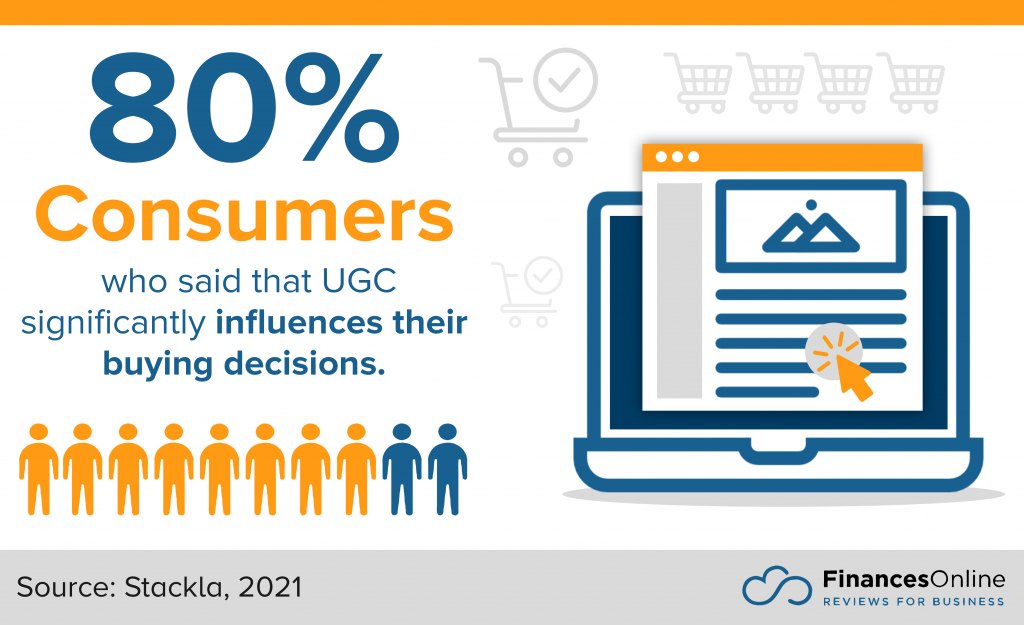
Key User-Generated Content Highlights
- User-generated content (UGC) provides authenticity to branded content.
- It’s challenging to find quality UGC for sharing.
- Marketers can use social media monitoring tools to find UGC for their organic content marketing posts.
4. Use of AI-Powered Predictive Analytics
Marketers have an abundance of data. Statistics on how much data is created showed that 463 ZB of data will be created every day by 2025 (Raconteur, 2020). On Instagram alone, over 100 million videos and photos are posted every day (Omnicore, 2021), while Facebook has 510,000 comments posted every minute (Bernard Marr & Co., n.d.). So, the problem of marketers is not the lack of data but too much of it and how to make sense of it.
Social media monitoring platforms have AI-powered predictive analytics features that are able to collect, segment, and analyze data autonomously at scale. For social media marketers, this means getting help with unifying data, discovering insights, and making predictions for content strategy, product pricing, and offers just to name a few. Marketers can use AI and machine learning to even come up with predictive models on how to solve their business challenges.
With the volume of data we deal with every day and the chaos surrounding social media and online content, even the best human digital marketer won’t be able to keep up. That’s why it’s imperative for marketers to include AI-powered predictive analytics in their marketing strategy.
Key AI-Powered Predictive Analytics Highlights
- 463 ZB of data will be created every day by 2025.
- Social media monitoring platforms have AI-powered predictive analytics features that are able to collect, segment, and analyze data autonomously at scale.
- Marketers can use AI and machine learning to even come up with predictive models on how to solve their business challenges.
5. Leveraging Social Monitoring to Find the Right Influencer
Through social media monitoring, marketers can discover individuals and customers that have clout and who might be willing to partner with them for marketing efforts. This is called influencer marketing and it has been a popular strategy for years since people started spending more time on social media platforms than on TV or print media.
Why would marketers continue to use influencer marketing? Well, for the simple reason that it works. Based on one survey, 90% of marketers said that influencer marketing is effective (Influencer Marketing Hub, 2021). So, this begs the question, what do people see in influencers that make them trust their recommendations?
Among Gen Zs and millennials—two cohorts that spend most of their mobile time using social media—an influencer’s knowledge about a product, brand, or service seems to be the winning factor. Other reasons include the influencer’s reliability, the entertainment value of the post, and if the influencer is someone they aspire to be (Morning Consult, 2022).
Source: Morning Consult
Key Influencer Marketing Highlights
- Social monitoring can help marketers discover and partner with individuals or customers for marketing efforts.
- 90% of marketers said that influencer marketing is effective.
- An influencer’s knowledge about a product, brand, or service is the most important factor that convinces consumers.
6. Using Social Monitoring to Improve SEO
SEO is one of the most important digital marketing tools because it allows your business to be found online. During the lockdowns of 2020 due to COVID-19, traditional media suffered while digital ad spending grew. Businesses spent about $47.5 billion on SEO and related products and services in 2020 (The Business Research Company, 2020). And this can be a worthwhile investment when you consider that 70% of business owners said that SEO generated more sales compared to PPC (30%) (Databox, 2022)
But SEO has evolved from simple keyword research to many other strategies for ranking, especially since Google’s algorithm has become smarter and more human-like in evaluating websites. Marketers can use social media monitoring tools to crawl not just social media platforms but also the entire web—including blogs, videos, images, or articles that may have mentions of their brand.
Marketers can apply different SEO techniques with the help of social media monitoring. For example, they can turn mentions into links or reach out to a blogger for a guest blog post. One study showed that marketing professionals who prioritized blogging increased their positive ROI by 13 times, while 57% reported that they were able to acquire new customers through blogging (OptinMonster, 2021).
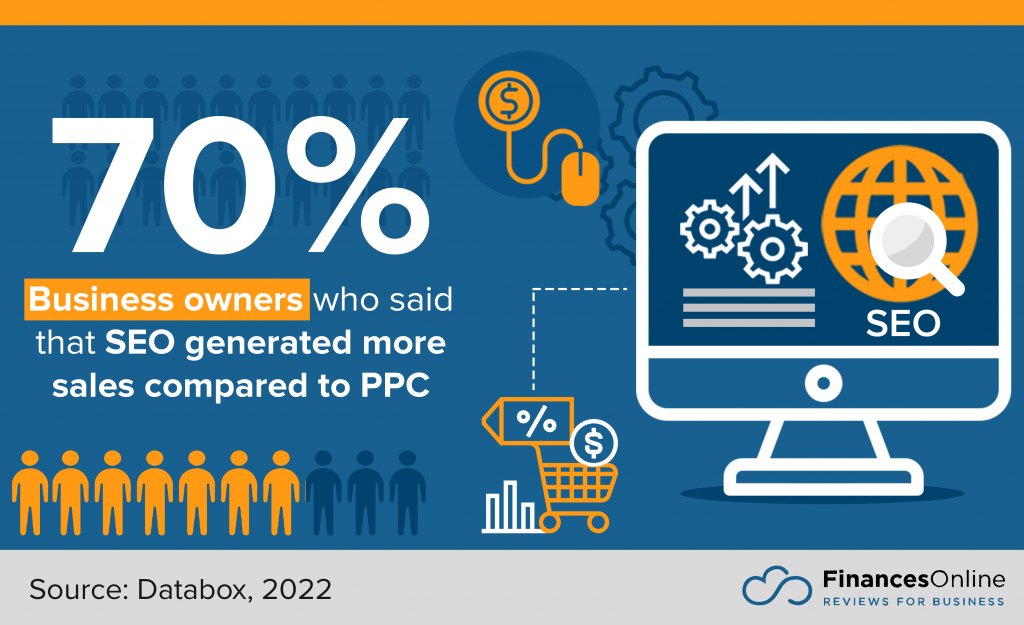
Key Social Monitoring to Improve SEO Highlights
- 70% of business owners said that SEO generated more sales compared to PPC (30%).
- Marketers can use social media monitoring tools to crawl not just social media platforms but also the entire web—including blogs, videos, images, or articles that may have mentions of their brand.
- Marketers can apply different SEO techniques with the help of social media monitoring to increase their online presence.
7. Relying on Social Monitoring to Manage Brand Health
Brand reputation has a direct impact on your business revenue that’s why it’s a must to know what people are saying about your product or company. Now, with easy access to the internet via mobile devices and smartphones, consumers can make a quick web search to get information on your business.
For instance, 77% of consumers said they ‘always’ or ‘regularly’ read online reviews when browsing for local businesses, while 89% were ‘highly’ or ‘fairly’ likely to use a business that responds to all of its online reviews (Bright Local, 2022). If you have tools helping you to track mentions, comments, and dissatisfied reviews, you can immediately respond and avoid a PR crisis that can have a long-term negative impact on your brand reputation.
Moreover, community management can be overwhelming and expensive. But with AI-powered tools, sentiment analysis, and other modern features found in social media monitoring tools, businesses will be able to handle community management more efficiently even without a dedicated community manager or digital agency.
How Consumers Are Using Online Reviews
Highly/fairly likely to use a business that responds to online reviews: 89
Highly/fairly likely to use a business that responds to online reviews
%Use Google to evaluate a local business: 81
Use Google to evaluate a local business
%'Always/regularly' read reviews when browsing local businesses: 77
'Always/regularly' read reviews when browsing local businesses
%Not very/not at all likely to use a business that doesn't respond to online reviews: 57
Not very/not at all likely to use a business that doesn't respond to online reviews
%Source: Bright Local, 2022
Designed byKey Social Media Monitoring for Brand Health Highlights
- Brand reputation has a direct impact on your business revenue.
- Social media monitoring can help track mentions, comments, and reviews to protect brand reputation.
- Community management can be more efficient and cost-effective using social media monitoring tools.
8. Social Monitoring Used to Measure Social Media ROI
Huge amounts of money are pouring into social media marketing. In the US alone, social media advertising spending is expected to reach almost $63 billion in 2022. That’s an 11% increase from the previous year (Oberlo, 2022). Meanwhile, 51% of marketers already using social media communities plan to invest more in these platforms in 2022 (HubSpot Blog, 2022).
With all the expertise, time, and money put into social media, how can you know if it’s all worth it? How do you know if what you did actually worked and helped achieve your business goals?
Definitely, looking at the data and metrics from your campaigns is part of the process to determine your social media ROI. By using social media monitoring and listening tools like AI and real-time reporting features, marketers can measure metrics that align with their objectives. Key metrics include audience engagement, site traffic, revenue generated, and sign-ups.
Key Social Media ROI Highlights
- Social media advertising spending is expected to reach almost $63 billion in 2022.
- 51% of marketers already using social media communities plan to invest more in 2022.
- Social media monitoring and listening tools can measure key metrics for social media ROI.
Utilize Social Media Monitoring for Excellent Customer Experiences
Social media monitoring trends help guide marketers in developing and adjusting marketing strategies. They also help measure the results of social media efforts, thanks to modern AI, automation, analytics, and reporting features. With millions of posts, images, and big data to manage, it’s almost unthinkable how modern digital marketers can do without social media software and tools to do their job.
Though the tools are high-tech and may appear very technical and distant, social media monitoring is still very much about making human connections. Keeping track of mentions and comments are meant to make your customers feel they are heard and supported. Read our guide on creating excellent customer experiences for your business to reinforce your campaigns.
Key Insights
- Increased Reliance on AI: The use of AI-powered predictive analytics in social media monitoring is becoming essential for managing the vast amounts of data generated daily.
- Geo-Based Monitoring: Geo-based social monitoring is gaining popularity for providing more relevant and personalized content based on users’ locations.
- User-Generated Content: Simplifying the sourcing of user-generated content (UGC) is crucial, as UGC greatly influences consumer buying decisions.
- Data Privacy Concerns: Responsible data collection and compliance with data privacy regulations are critical as consumers become more concerned about their data privacy.
- Influencer Marketing: Leveraging social monitoring to find the right influencers is effective, as influencer marketing continues to show strong ROI.
- Improving SEO: Social monitoring can enhance SEO efforts by identifying brand mentions across the web and converting them into backlinks or guest blogging opportunities.
- Brand Health Management: Monitoring brand mentions and reviews helps in managing brand health and reputation, which directly impacts business revenue.
- Measuring ROI: Social media monitoring tools are vital for measuring the ROI of social media efforts, ensuring that investments in social media marketing are worthwhile.
FAQ
- What is social media monitoring?
Social media monitoring involves using tools to track, analyze, and respond to conversations about your brand on social media platforms. This helps businesses understand customer sentiments, manage brand reputation, and improve engagement. - How can social media monitoring improve customer service?
Social media monitoring allows businesses to respond quickly to mentions and inquiries, making customers feel valued and supported. This can increase customer satisfaction and loyalty. - Why is data privacy important in social media monitoring?
Data privacy is crucial because consumers are increasingly concerned about how their data is collected and used. Businesses must ensure they comply with data privacy regulations to build trust and protect consumer information. - What is geo-based social monitoring?
Geo-based social monitoring uses geofencing technology to provide more personalized content based on users’ locations. This helps businesses connect with their local community more effectively. - How does AI-powered predictive analytics benefit social media monitoring?
AI-powered predictive analytics can autonomously collect, segment, and analyze large amounts of data. This helps marketers discover insights, make predictions, and develop more effective content strategies. - How can social monitoring help in finding the right influencer?
Social monitoring tools can identify individuals with significant influence over your target audience. Partnering with these influencers can enhance marketing efforts and increase brand visibility. - What role does social monitoring play in improving SEO?
Social monitoring helps identify brand mentions across the web, which can be converted into backlinks or guest blogging opportunities. This enhances online presence and improves search engine rankings. - How does social media monitoring manage brand health?
By tracking mentions, comments, and reviews, social media monitoring helps businesses address issues promptly and manage their brand reputation effectively, preventing long-term negative impacts. - How can social media monitoring tools measure ROI?
These tools provide metrics such as audience engagement, site traffic, revenue generated, and sign-ups. By analyzing these metrics, businesses can determine the effectiveness of their social media campaigns and their impact on business goals. - Why is user-generated content important in social media marketing?
User-generated content (UGC) adds authenticity to brand messages and significantly influences consumer buying decisions. Social monitoring tools help marketers find and utilize quality UGC for their campaigns.
References:
- Bernard Marr & Co. (n.d.). How Much Data Do We Create Every Day? Retrieved from bernardmarr.com
- Bright Local (2022). Local Consumer Review Survey 2022. Retrieved from brightlocal.com
- Databox (2022). SEO vs. PPC: Which Channel Generates More Sales? Retrieved from databox.com
- HubSpot Blog (2022). 2022 Social Media Marketing Report. Retrieved from blog.hubspot.com
- Influencer Marketing Hub(2021). The State of Influencer Marketing 2021: Benchmark Report. Retrieved from Influencer Marketing Hub
- KPMG (2021). Corporate data responsibility: Bridging the consumer trust gap. Retrieved from advisory.kpmg.us
- Morning Consult (2022). The Influencer Report. Retrieved from morningconsult.com
- Oberlo (2022). Social Media Ad Spend in the US. Retrieved from oberlo.com
- Omnicore (2021). Instagram by the Numbers: Stats, Demographics & Fun Facts. Retrieved from Omnicore
- OptinMonster (2021). Blogging Statistics. Retrieved from OptinMonster
- Raconteur (2020). A Day in Data. Retrieved from raconteur.net
- Sprout Social (2020). Why brands need a social media monitoring strategy. Retrieved from sproutsocial.com
- Stackla. (n.d.). Bridging the gap: Consumer & marketing perspectives on content in the digital age. Stackla
- The Business Research Company (2020). Search Engine Optimization Services Market. Retrieved from The Business Research Company
- Trustpilot (2020). Why personalized experiences can boost conversions. Trustpilot














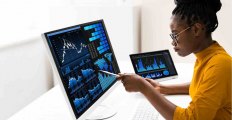


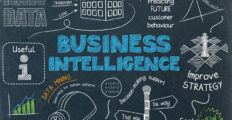



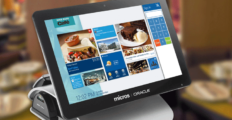
Leave a comment!